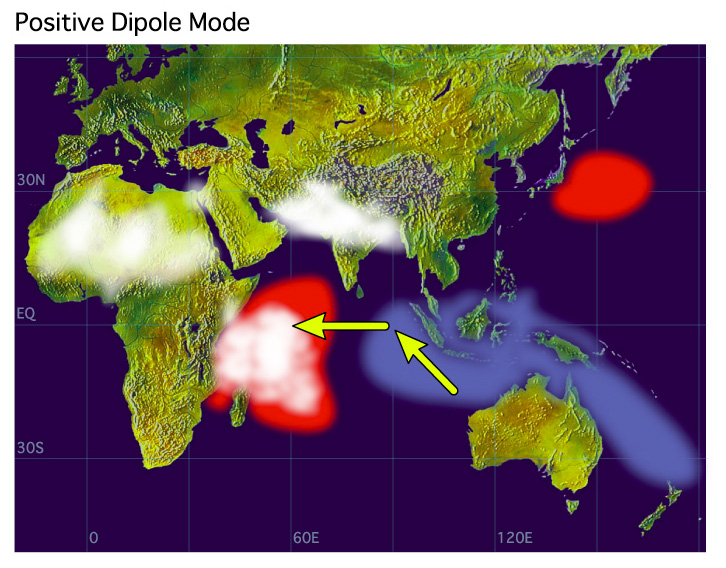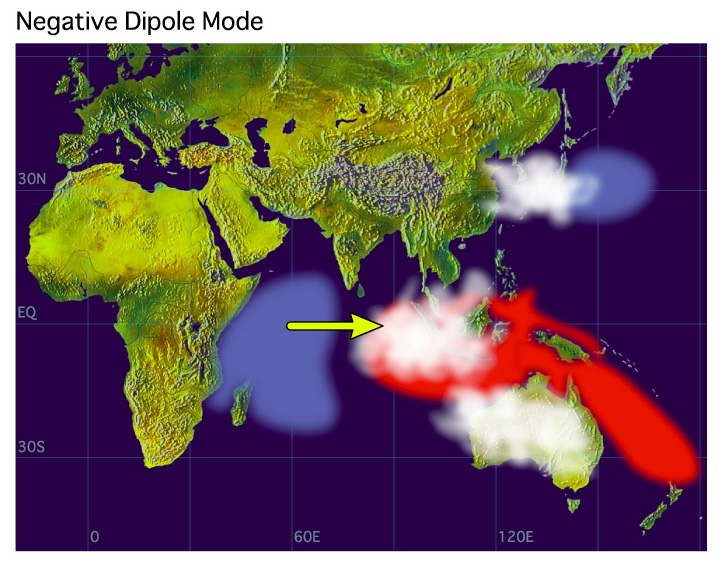 Schematic diagram of SST anomalies (red shading warming; blue cooling) during a positive IOD event. White patches indicate increased convective activity. Arrows indicate wind direction. Indian Ocean Dipole (IOD) is a coupled ocean-atmosphere phenomenon in the Indian Ocean. It is normally characterized by anomalous cooling of SST in the south eastern equatorial Indian Ocean and anomalous warming of SST in the western equatorial Indian Ocean. Associated with these changes the normal convection situated over the eastern Indian Ocean warm pool shifts to the west and brings heavy rainfall over the east Africa and severe droughts/forest fires over the Indonesian region. The name IOD is coined by Prof. Yamagata, Dr. Saji and other researchers of the climate variations research program of Frontier Research Center for Global Change (FRCGC) to represent the zonal dipole structure of the various coupled ocean-atmosphere parameters such as SST, OLR and Sea Surface Height anomalies. Generally, this configuration is also called positive IOD. Infact, a negative IOD also evolves preceding/following a postive IOD, with reverse in the configuration of the positive IOD.  Schematic diagram of SST anomalies (red shading warming; blue cooling) during a negative IOD event. White patches indicate increased convective activity. Wind direction is indicated by arrows. The aim of this home page is to provide an up-to-date information on the rapidly evolving research activity in the Indian Ocean sector related to the Indian Ocean Dipole phenomenon. Webpage maintained by Suryachandra A. Rao |